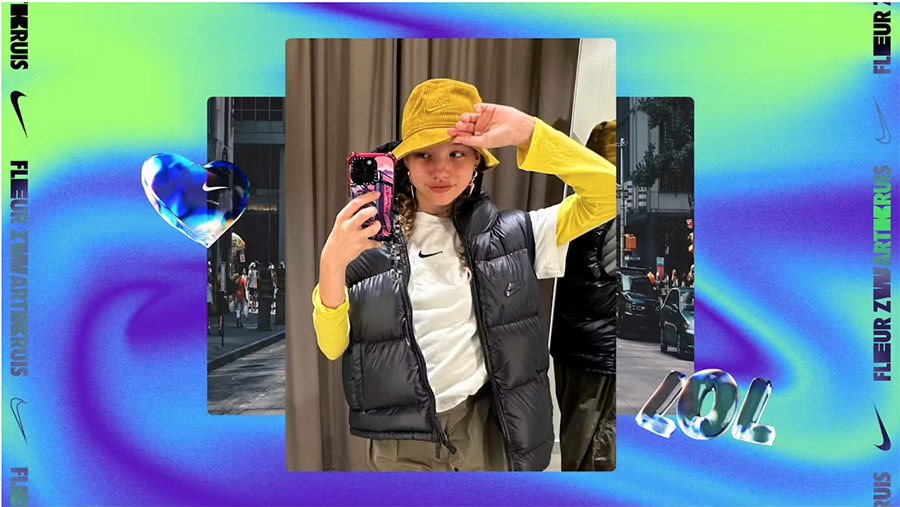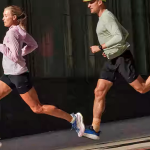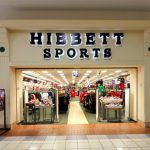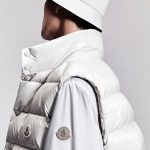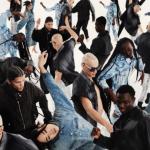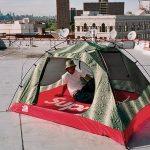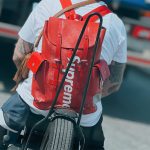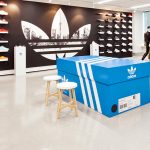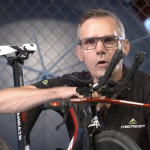With all the conversation surrounding Wall Street darlings Lululemon and Nike stumbling the last few weeks after the companies released earnings reports for their most recent quarters, it is interesting to assess the hard data to support or counter early reactions to the brands’ prospects.
What helps are surveys and reports regarding the appeal of the brands to key consumer groups to gauge near-term prospects. It is also important to read the trend lines for other industry brands that continue to creep into the conversation when discussing market share and consumer brand appeal, especially the young consumer.
In its recently released 47th semi-annual Taking Stock With Teens survey, Piper Sandler, in partnership with DECA, found that Nike remains the #1 brand for teen consumers across footwear and apparel. However, Nike saw its position challenged of late by other brands due to what many noted as stagnation in the giant’s innovation pipeline and its ill-fated decision to turn its back on key retailers. Those retailers simply looked for replacement brands to fuel the consumer pipeline and found more than a few willing brand partners.
As seen in several surveys and store checks this spring, the three brands that appear to be garnering the most attention as footwear brands on the rise include Hoka, On and New Balance, with Wall Street analysts passing judgment on Nike with every possible option from maintaining a Buy rating, reducing target price or downgrading NKE shares.
Lululemon reportedly saw a decline in teen interest after rising in popularity among younger shoppers last year. The brand has also had more competition and has lost mindshare to other up-and-coming active lifestyle apparel brands. There is evidence that the economics of a high-end brand and a more constrained teen consumer may play a part as well.
Piper Sandler recently cited these trends in a research note accompanying its decision to cut its price target on Lululemon stock from $525 to $470 per share. Still, other analysts are still working to determine if that’s the case and cite LULU’s continued ability to feed its innovation pipeline as a key differentiator.
For Piper Sandler’s survey, the company reported over 61 million data points around teen preferences and spending in the 23-plus years of researching teens. And spending is down in this demographic.
Teen “self-reported” spending was down 6 percent year-over-year (YoY) to $2,263 and up 1 percent versus last fall; parent contribution was 62 percent in line with the previous fall.
“Our survey results indicate a slight increase in teen spending sequentially from fall 2023, but self-reported spend is down 6 percent year-over-year, well below pre-pandemic levels,” said Abbie Zvejnieks, senior research analyst, Piper Sandler.
Teen footwear spend was down 1 percent YoY, led by average-income teen footwear spend decreasing 3 percent YoY, partially offset by upper-income teen footwear spend increasing 5 percent YoY.
Upper-income female fashion spend was down 12 percent YoY, with lower spend across apparel (-13 percent YoY), shoes (-3 percent YoY), and accessories spend (-21 percent YoY).
“We are seeing some significant shifts in brand preferences including the rise of smaller, innovative brands, which are taking share from incumbents,” Zvejnieks observed. “We think social media has led to an accelerated trend cycle including an increased emphasis on key products, and brands will have to be nimble to keep up.”
Nike Share At Risk
Piper Sandler said Nike remains the #1 brand for teens in apparel and footwear; however, the company contends that Nike is beginning to lose market share across categories to On Running, Hoka and New Balance.
Key survey results show:
- Nike remains the #1 favorite footwear brand, but mindshare decreased 190 basis points YoY and 230 basis points from fall 2023. Nike lost 510 basis points of mindshare YoY in athletic footwear among upper-income teens.
- New Balance gained the most footwear mindshare YoY, while Converse lost the most footwear mindshare YoY.
- Among upper-income teens, Hoka remained the #3 athletic footwear brand, increasing mindshare by 280 basis points YoY
- On Running remained the #5 athletic footwear brand, increasing mindshare by 120 basis points YoY.
Jim Duffy, managing director, Stifel, noted a different take on Nike, suggesting that the company has made progress against its plans to right the ship, making progress against its inventory overhang, referring to figures in its recently filed 10-Q that show that North America inventory levels declined 21 percent at the end to the quarter ended February 29, while overall it saw inventories decline 13 percent year-over-year. However, Duffy’s assessment also indicated a sequential improvement in unit sales growth in Nike footwear and apparel and a deterioration in average selling prices.
“We highlight this as a reflection of multi-year underperformance within the category and reliance on favorable product mix, DTC increases, and like-for-like pricing increases to drive the top line,” Duffy wrote in his report. “With greater emphasis on Wholesale in coming periods, we expect NKE can reclaim unit growth trajectory supportive of incremental profitable growth,” referring to the company’s decision to support growth in the wholesale channels again selling to retailers.
Stifel maintained its “Buy” rating on Nike, Inc. with a target price of $117 per share.
Bank of America called into question Nike’s goal of achieving operating margins in the high teens, a goal that based on the company’s dream of generating 60 percent of revenues from direct-to-consumer (DTC). BofA suggested that the goal would be tested as Nike now moves back to a larger focus on wholesale as someone inside the firm may have finally realized that the consumers buying multiple pairs of sneakers on a monthly basis are not necessarily doing so online. They want to pay cash in person—in a brick-and-mortar store. The shift is a good omen for Foot Locker and JD fans (see additional SGB Media coverage below).
BofA maintained its “Neutral” rating on NKE shares but cut its price per share objective to $110 from its previous level of $120 per share.
Williams Trading believes the overall demand for Nike product is waning, and focusing on Air as an innovation speaks to the overconfidence of Nike management and its legacy innovation pipeline. After reviewing data from Air Max Day and the launch of the Air Max Dn, Williams Trading Analyst Sam Poser heard from retailers that the shoe had two colors that sold while the other colors did not, even going so far as to call the shoe a “dud.”
Williams lowered Nike’s target share price to $81 a share and cut its rating to “Sell.”
Nike Retail Still Working – For Some
In a Placer.ai report that measures foot traffic at retail, the research firm said that, fueled by significant store growth, Nike managed to keep YoY foot traffic positive in the first two months of 2024 despite the arctic blast that plagued overall retail visits in January.
Placer.ai said in the report that by diving deeper into the demographic data for Nike’s trade area they found some indication that the aggressive expansion is not the only factor driving the brand’s recent foot traffic gains.
“Analysis using the AGS: Demographic Dimensions dataset revealed that since the 2021 retail reopening – and specifically Q3 2021 – the median household income (HHI) of Nike’s captured market has been higher than that of its potential market*. And the gap between the median HHI in the brand’s captured and potential markets seems to have widened even further in 2022-2023,” Placer.ai revealed.
Placer.ai said that driving traffic from affluent consumers appears to be an intentional strategy by the brand. It reference recent comments from Nike CEO John Donahoe that the brand is expanding in products across price points and now offers more expensive womenswear than ever before – and location intelligence indicates that this strategy is working.
“By Q4 2023, the median HHI of Nike’s captured market had climbed to $95.6K – the highest in nearly five years. This suggests that despite the adverse impact of inflation on some aspirational shoppers, Nike is succeeding in driving high-value foot traffic,” the report said.
Lululemon Still An Innovator
Lululemon remains the #2 athletic apparel brand among upper-income teens, but Piper Sandler said it is seeing up-and-coming players such as Alo Yoga and Vuori gaining market share.
Key survey results show:
- Lululemon is #1 among female upper-income teens.
- Alo Yoga was the #11 favorite brand in the Spring 2024 survey, compared #35 in the fall 2023 survey.
- Vuori was the #15 favorite brand in spring 24 compared to #24 in the fall survey.
Lululemon posted a strong fiscal fourth quarter but offered guidance of slower growth in the first quarter. That revelation sent shares 11 percent lower in after-hours trading after the company’s Q4 conference call with analysts. LULU shares plummeted $120 in the last couple weeks from a close at nearly $479 on March 21 to a close at just over $359 on April 9.
Still, some analysts believe the brand can turn the tide back in its favor after a tough start to the new year.
Bank of America said in a research note that “LULU stands out versus its peers with a robust pipeline of innovative fabric, styles and categories” as it reaffirms its “Buy” rating and target price per share of $530.
William Blair may have seen some contrast to what Piper Sandler discovered in its teen survey, noting in its research report following LULU’s fourth-quarter call that “While a choppy consumer environment has likely contributed to the domestic slowdown, it also appears to be somewhat self-inflicted given the stronger-than-expected sell-through of smaller sizes/color by younger guests, with the company now chasing additional inventory (size 0 to 4 and color both over-index in the U.S.).”
Blair believes LULU can get past the U.S. slowdown in Q1 and reiterated its “Outperform” rating “given healthy overall brand momentum,” noting the brand has been the strongest global market share gainer in the adult active apparel industry over the past four years. The company also sees a significant opportunity to grow domestic brand awareness, with just over 30 percent brand awareness versus peers in the 80-plus percent range.
Placer.ai put the LULU first quarter slowdown in more persepctive and noted (see graphic above) that weather may have played a part and recovery was underway.
“Lululemon and the wider Athleisure & Sportswear space were less insulated from the effects of the [January] storm, and the comparison to a strong 2023 made for mild YoY visit gaps in January 2024. But by the end of February 2024, both lululemon and the Athleisure & Sportswear space had narrowed their visit gaps and appeared to be on an upward trajectory,” the company wrote in its report.
Behind the Piper Sandler Numbers
In a recent interview with Yahoo Finance, Piper Sandler’s Zvejnieks said that Lululemon had 11 percent of upper-income female teens responding that it was a new brand that they were wearing over the last two years, but that percentage dropped to 8.5 percent in its 2024 survey. Still, Zvejnieks blamed the brand’s lack of attention on the teen consumer’s fickleness rather than a lack of newness or innovation on LULU’s part.
For Nike, Zvejnieks told Yahoo Finance that the brand is now losing share across all categories, pointing directly at the lagging product innovation haunting Nike. She points to Hoka, On and New Balance as the key beneficiaries of Nike’s stumbles. Zvejnieks also highlighted Adidas in the street lifestyle category, as teens appear to be moving back to Sambas instead of Dunks.
Zvejnieks emphasized that teens are responding to newness and innovation, and Nike is calling out new styles like the recently released Air Max Dn as the key to their ability to refuel growth. Other analysts are still determining the upside and downside regarding the turn around efforts at the Swoosh brand and the real impact of a slower Q1 a fickle teen consumer on the fortunes of Lululemon.
“‘Innovation’ is an overused and misunderstood concept,” wrote active lifestyle industry analyst and advisor Matt Powell in a LinkedIn post days before the Nike conference call. “Brands that played it safe during the pandemic and leaned hard on core products now look stale and dated (Nike, UA, Adidas). Brands that stayed fresh flourished (LULU, Hoka, On, NB). It is not about new technologies, which are incremental at best, but rather about fashion. Consumers still demand new and fresh products. Those that deliver here will win.”
Image courtesy Nike
* * *
See more SGB Media coverage of Nike, Lululemon and up and coming brands below.
EXEC: Nike Admits it Has a Problem, and Its Solution is… Air?
Nike Names Minimalist Designer Tim Hamilton as Global VP of Design
Lululemon Posted Strong Q4 Results but Guides to Slower Q1 Growth
Report: Retail Traffic Trends at Nike and Lululemon Ahead of Earnings

